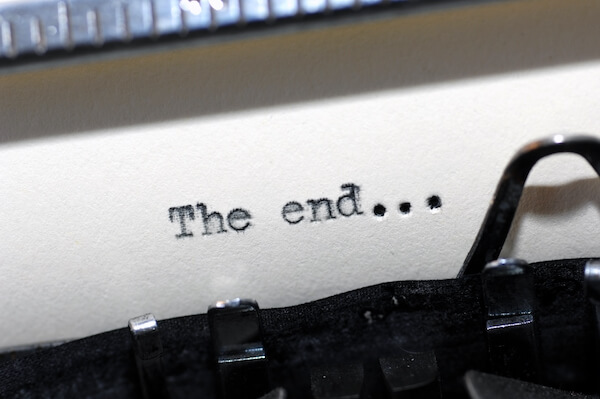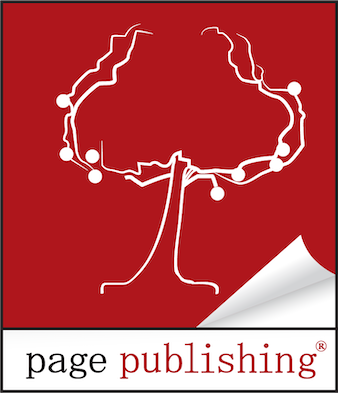
Every great story must come to an end (booo!), but the good news is that you, as the author, get to choose what you want that end to be (yay!). When it comes to fiction, not all endings are created equal—each book dictates the conclusion that makes the most sense for the story. Sometimes endings are guided by genre expectations, and other times the author surprises readers in a way they weren’t anticipating. Either way, one of your duties before finishing your book is to decide which type of ending to employ. Not sure which to choose? We’ve rounded up 6 common book endings—read on to learn about each one and how to write them effectively.
1. Resolved Ending
All loose ends are tied up in a resolved ending, leaving the reader without any lingering questions. All storylines come to a natural conclusion, and the story threads are resolved. In many stories, especially fairy tales and romance novels, this is referred to as a Happily Ever After ending, where the book concludes on a high, satisfying note. A fun spin is the Happy For Now ending, which creates a sense of hope and optimism. However, not all resolved endings are happy—many famous tragedies have resolved endings despite being sad or depressing. The key word here is resolve (not the emotion attached to it).
2. Unresolved Ending / Cliffhanger
In contrast, unresolved endings intentionally leave the readers with more questions than answers. A popular technique for unresolved endings is the cliffhanger, a plot device that creates shock and suspense and makes the reader want more. Series authors use cliffhangers to encourage people to read the next book in the series. You may leave your protagonist in peril, about to make a significant choice, or racing against a ticking clock. Cliffhangers shouldn’t be used if there’s no follow-up story to finish the storyline (See below for Ambiguous endings, a type of unresolved ending used for stand-alone books).
3. Unexpected Ending
Have you ever finished a book and thought, “I didn’t see THAT coming”? Chances are you just read an unexpected ending or an ending with a twist. This type of book ending is often used in domestic and psychological thrillers. The trick for mastering a surprise ending is to not make it predictable—it should genuinely shock the reader by strategic foreshadowing and dropping breadcrumbs along the way. Twists shouldn’t be used “just because” or to resolve plot problems in a manner that’s not natural to the story. The best unexpected endings create such a surprise that it stays with the reader long after reading.
4. Ambiguous/Open-Ended
Ambiguous, by definition, means to be open to or have several meanings or interpretations. Therefore, an ambiguous book ending is one in which individual readers come to their own conclusions about what happened or might happen in the future. It’s subjective—readers might completely disagree with their own interpretation. When done well, ambiguous endings leave the reader with a multitude of possibilities, and readers are encouraged to draw their own conclusions. This type of ending is divisive—some readers love them, and others loathe them.
5. Full Circle Ending
Also referred to as a Tied Ending, this is when the story ends where it began. It could be as simple as using the same opening and closing sentence or scene (sometimes called “bookending” because like matching book ends, the beginning and end match). A common trope is the Hero’s Journey, often used in mythology and folktales, where the protagonist experiences a sudden or unexpected journey and must find himself, followed by a triumphant return home. A caution for full-circle endings is that they can sometimes feel pointless to the reader, so authors should be sure that the journey/story is meaningful and worthwhile.
6. Expanded Ending / Epilogue
An expanded ending usually occurs in an epilogue, where the narrative jumps forward. Some epilogues jump days, months, or even years into the future. Others change perspectives or narrators. Not all books with an epilogue require a prologue—those two literary devices serve different purposes. A benefit of expanded endings is that they allow the author to resolve unanswered questions that weren’t possible to answer in the main narrative. As a result, readers often feel satisfied with epilogues as the conclusion of a novel. An important note about epilogues: They shouldn’t be overly lengthy. Most epilogues don’t exceed the length of a typical book chapter, and many are even shorter.
Some authors have the ending of their book planned from the beginning (plotters), while others figure it out organically as they go (pantsers). There is no right or wrong, only a personal preference for what works for you and your story. When choosing the type of ending, consider what feels natural and logical and what is expected for your genre. If you’re still unsure, try writing more than one ending, then compare and contrast the impact of each. The good news, at the end of the day (pun intended), is that when you’re writing the ending, chances are you’re nearing the finish line!
